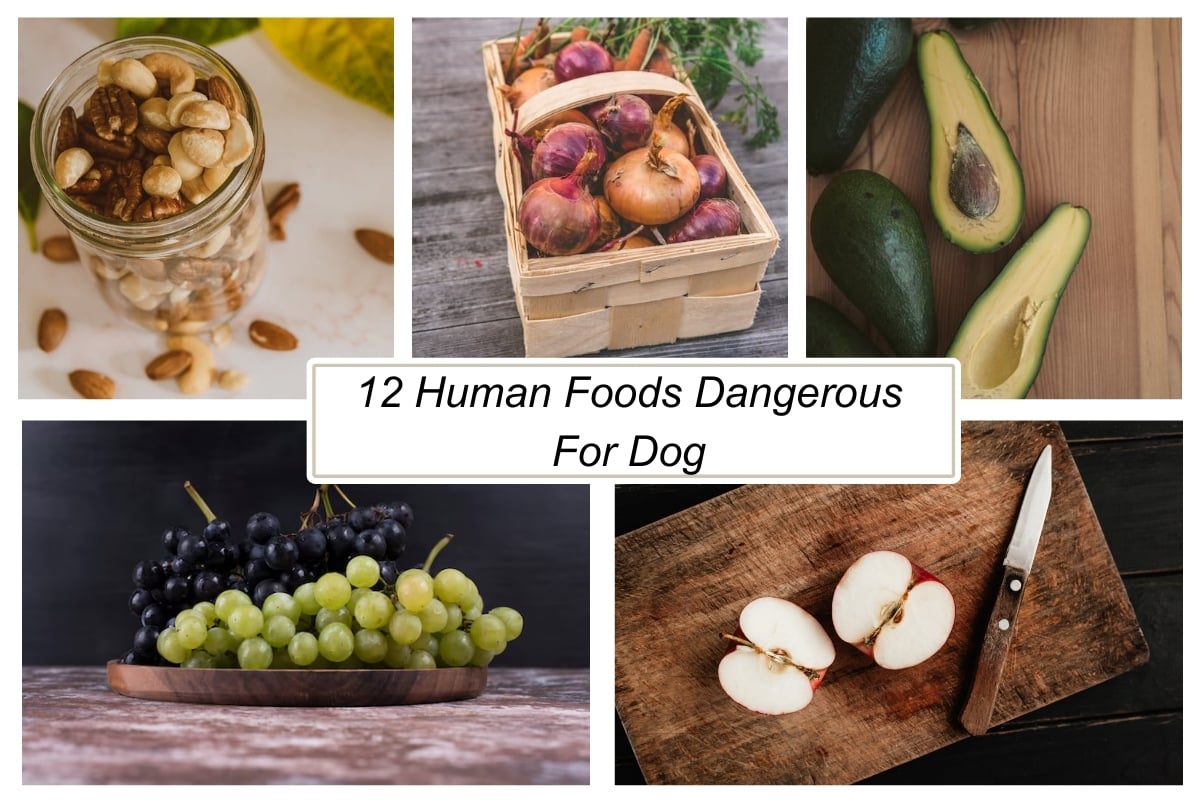12 Human Foods Dangerous For Dog

As a responsible dog owner, understanding what you can and cannot feed your furry friend is crucial for their health and well-being. While providing a balanced and nutritious doggy diet is essential, it’s not always enough. Many foods that are perfectly safe and healthy for humans can pose serious risks to dogs.
There’s nothing worse than watching your beloved pet suffer due to a simple dietary oversight. Even though dogs are often regarded as man’s best friend, it’s important to remember that they have different nutritional needs and sensitivities than we do.
To help you keep your pup safe, we’ve compiled a detailed list of “The 12 Human Foods That Could Be Fatal to Your Dog.” This list not only highlights the specific foods that can be harmful but also explains the harmful substances they contain and the potential effects on your dog’s health.
While we tend to treat our dogs like family members, it’s crucial to recognize that mealtime indulgences can lead to more than just a spoiled pet; they can have dire consequences for your dog’s health. Let’s delve into the twelve most dangerous human foods that could potentially endanger your canine companion, examining what makes them toxic and the serious risks they pose to your beloved pet. Being informed is the first step in ensuring your dog remains happy and healthy!
#1 – Chocolate
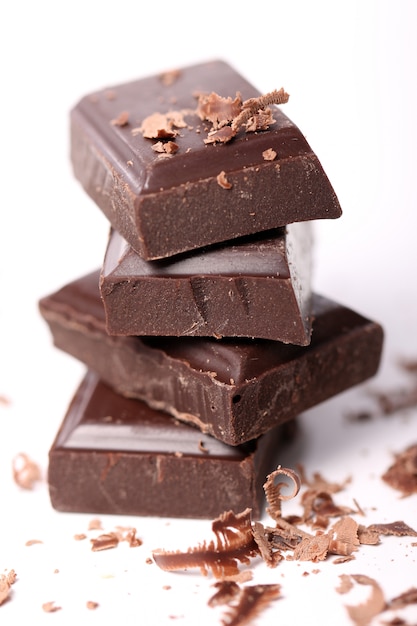
Let’s start with one of the most well-known dangers: chocolate. Almost every dog owner knows that chocolate is a big no-no for their furry friends, so we might as well get this one out of the way right off the bat. After all, who would want to leave a tempting Toblerone or a chocolate bar lying around, right?
So, what’s the deal with chocolate? It contains two substances called caffeine and theobromine, which belong to a group called methylxanthines. Here’s a fun fact: the darker the chocolate, the more methylxanthines it has, making it more dangerous for dogs. That’s why white chocolate, which has far less of these substances, is less toxic.
Now, if a dog happens to sneak a bite of chocolate, the consequences can be pretty serious. It can lead to a range of unpleasant symptoms like vomiting, dehydration, and stomach pain. Yikes! Dogs may also show signs of severe agitation, muscle tremors, and an irregular heartbeat. In more severe cases, it can even cause elevated body temperature, seizures, and, tragically, death.
So, it’s really important to keep all chocolate out of your dog’s reach and be mindful about what’s around during celebrations or holiday gatherings. A little vigilance can go a long way in keeping your pup safe and happy! Remember, even if it looks delicious to us, it can be a total disaster for our canine companions.
H/T ASPCA
#2 – Milk

Sure, we all know that puppies drink milk from their mothers right after they’re born. But here’s the catch: just like some humans (myself included), many dogs can be lactose intolerant, which means they struggle to digest milk as they grow up.
So, what’s the problem with milk? It contains lactose, which is a type of sugar that dogs often lack the enzymes to break down properly. This can lead to some not-so-fun side effects.
If a dog drinks milk, it could end up with vomiting, diarrhea, and other gastrointestinal issues. While this might not be immediately life-threatening, it can lead to bigger problems down the line. For example, frequent digestive upset can make a dog more susceptible to bacterial infections, which can result in serious health concerns.
So, even though it might seem harmless to share a little milk with your dog, it’s best to skip it altogether to avoid any tummy troubles. There are plenty of other tasty treats out there that are safe for your pup!
#3 – Cheese
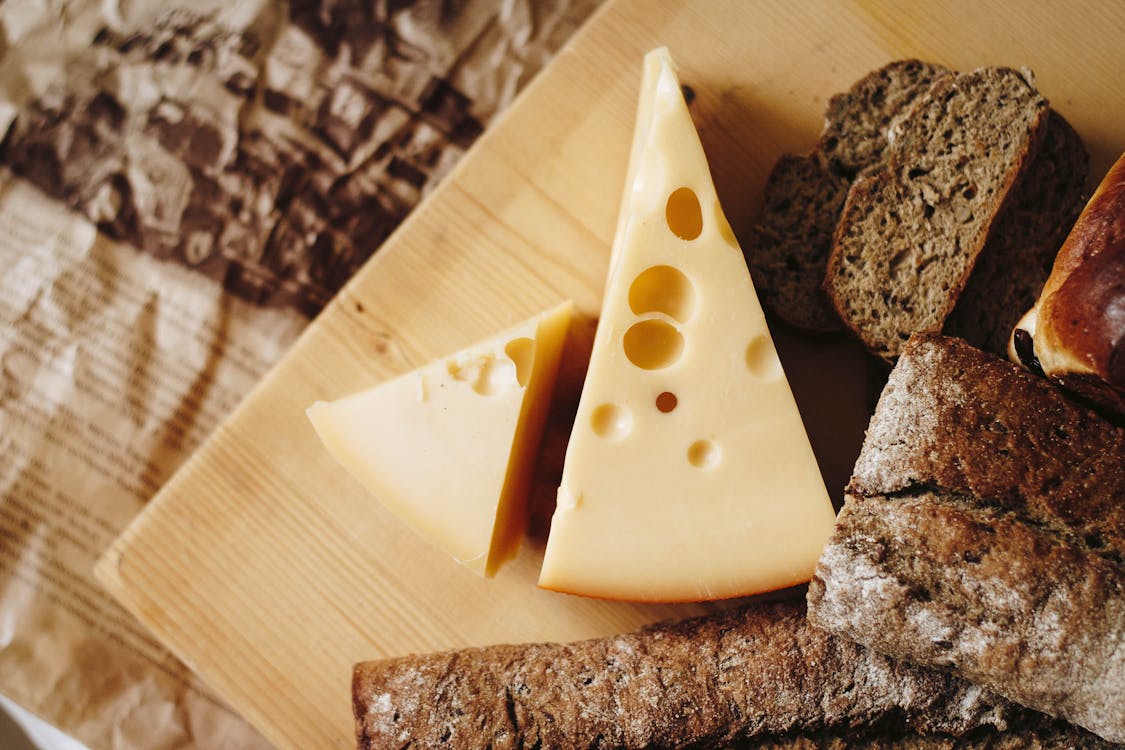
Sorry, buddy, but no Grilled Cheese Spot for you! Trust me, your stomach will thank me later.
What’s the deal with cheese? Just like milk, it contains sugars and fatty components that dogs often can’t digest properly because they lack the necessary enzymes.
If a dog munches on cheese, especially in large amounts, it can lead to some pretty uncomfortable issues. You might notice symptoms like gas, diarrhea, and vomiting. While a small taste here and there might be okay for some dogs, too much cheese can really upset their tummy.
If you’re curious to learn more, check out the article “Is Cheese Bad For Dogs?” for a deeper dive into this cheesy topic. It’s always good to stay informed about what’s safe and what’s not for our furry friends!
H/T Dog Food Adviser
#4 – Onion
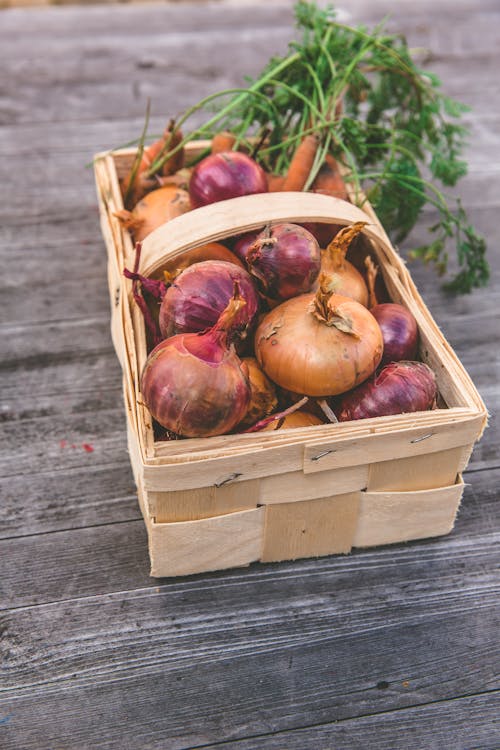
While onions might make our savory dishes taste amazing, they can do a lot more than just make your dog cry.
What’s the issue with onions? They contain compounds that can be really harmful to dogs if they eat enough of them.
The effects of onions can be serious. They can actually damage a dog’s red blood cells, making them weaker and less energetic. If a dog consumes a significant amount of onions, it could lead to severe anemia, and in some cases, a blood transfusion might even be necessary to help them recover.
So, it’s best to keep onions—and any dishes that contain them—well away from your pup. Their health is too important to take any chances!
H/T ASPCA
#5 – Macadamia Nuts

One of the more recent discoveries in dog health is that macadamia nuts can be extremely harmful if ingested.
What’s in macadamia nuts? The exact chemicals that cause the toxic reaction in dogs are still a mystery, but it’s clear that they can lead to some serious issues.
When a dog eats macadamia nuts, it may experience weakness and have trouble walking, particularly in its hind legs. Other symptoms can include vomiting, a staggering gait, depression, tremors, and even hypothermia.
Given how dangerous they can be, it’s best to keep macadamia nuts far away from your pup. Their safety should always come first!
H/T VetMedicine
#6 – Garlic
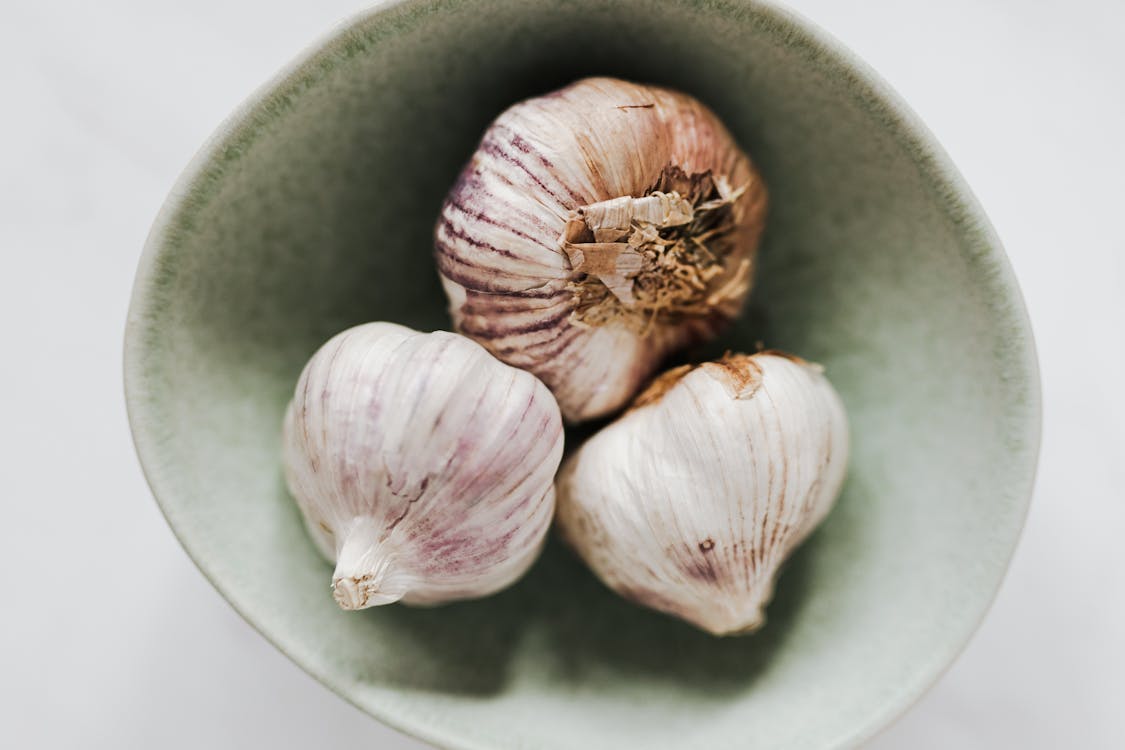
Think of your dogs as little vampires—keep them away from raw garlic at all costs!
What’s the issue with garlic? Similar to onions, the stronger the garlic, the more toxic it can be. In fact, since garlic is part of the onion family, it’s even more dangerous for dogs on a per-ounce basis. Garlic contains compounds that are quite toxic to our furry friends.
The effects of garlic consumption on a dog’s red blood cells may not show up for a few days, but you’ll likely notice your dog becoming tired and less active. You might also see that their urine changes to an orange or dark red color. In severe cases, a blood transfusion could be necessary, just like with onions.
To learn more about the risks, check out the article “Is Garlic Bad For Dogs?” It’s always a good idea to stay informed about what can keep your pup safe and healthy!
H/T ASPCA
#7 – Grapes
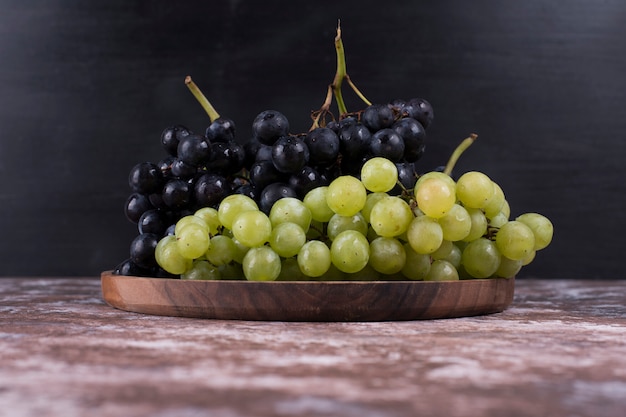
Just like macadamia nuts, grapes and raisins can be extremely toxic to dogs.
So, what’s the problem with grapes? Although the exact chemicals and compounds responsible for the toxicity are still unknown, the effects of consumption can be devastating.
Grapes and raisins can lead to rapid kidney failure in dogs. The severity of the reaction can vary from one dog to another, and sometimes symptoms may not appear right away. However, when they do show up, you might notice signs like vomiting, diarrhea, lethargy, dehydration, and a lack of appetite. Tragically, death from kidney failure can occur within just three to four days.
Given these serious risks, it’s crucial to keep grapes and raisins far away from your furry friend. Their health and safety should always be the top priority!
H/T ASPCA
#8 – Avocados

You might want to think twice before sharing that guacamole with your furry friend—he’ll definitely thank you for it later!
So, what’s the issue with avocados? The leaves, pits, bark, and even the fruit contain a toxin called persin, which can be harmful to dogs.
The toxic effects of avocados can vary depending on the type, but they can lead to upset stomachs, breathing difficulties, and fluid buildup in the chest. However, the biggest danger seems to come from the pit. It’s slippery and can easily be swallowed, leading to a potentially serious obstruction in the gastrointestinal tract.
To keep your pup safe, it’s best to avoid sharing any avocado products with them. There are plenty of other treats that are dog-friendly and just as tasty!
H/T ASPCA
#9 – Apple Cores

While most people steer clear of eating the core of an apple, it’s important to know that it’s even more toxic to dogs. Along with a few other fruits, you definitely want to make sure those apple cores are out of reach!
So, what’s the deal? The core of an apple, as well as the cores of plums, peaches, pears, and apricots, contains cyanogenic glycosides, which can release cyanide when ingested.
The effects of this toxin can be serious. Symptoms may include dizziness, difficulty breathing, seizures, collapsing, hyperventilation, shock, and in severe cases, even coma.
To keep your pup safe, make sure to dispose of apple cores and other fruit pits properly. It’s a simple step that can help prevent a potentially dangerous situation!
H/T HubPages
#10 – Yeast Dough

Bread may have a reputation for making you gain weight, but when it comes to your pup, the real danger lies in yeast dough. While having a chubby puppy isn’t the worst thing, you definitely want to keep raw yeast dough far away from them!
So, what’s the problem with yeast dough? When ingested, it can ferment in a dog’s stomach, leading to some serious toxicity.
Not only does the fermentation produce alcohol, which is harmful, but the dough can also expand in your dog’s stomach or intestines, creating a lot of gas. This buildup can result in severe pain and even lead to a ruptured stomach or intestinal tract. You might see symptoms like vomiting, abdominal discomfort, and lethargy.
To keep your furry friend safe, make sure to store yeast dough out of reach. It’s a small precaution that can prevent a big health issue!
H/T VetMedicine
#11 – Caffeine

Honestly, I can’t imagine anyone sharing coffee with their dog. What would they even do with it—just sit there and watch the world go by? But seriously, it’s really important for dog owners to keep their pets far away from coffee and any form of caffeine.
So, what’s in coffee that’s so dangerous? It contains a stimulant called methylated xanthine.
This compound can really rev up a dog’s nervous system, leading to some serious issues. Dogs exposed to caffeine may experience symptoms like vomiting, restlessness, heart palpitations, and in severe cases, it can even be fatal.
To keep your pup safe, make sure to keep all coffee and caffeinated products out of their reach. It’s a simple step that can help avoid some serious health risks!
#12 – Bacon
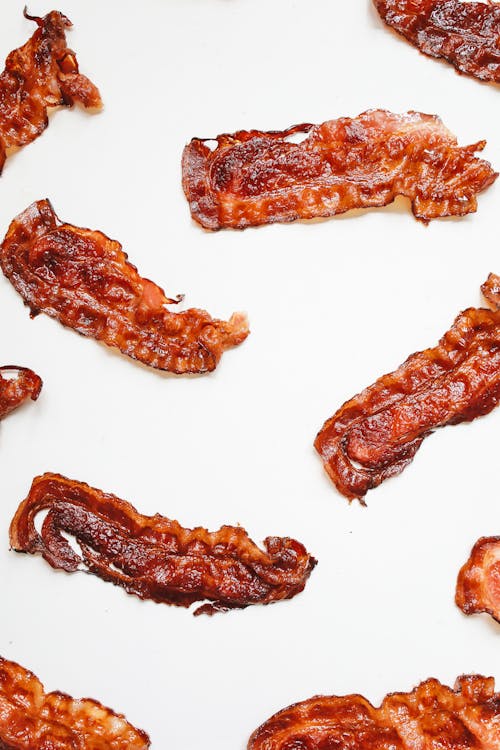
What? Bacon?! Say it isn’t true! It’s a real bummer that we can’t share one of the tastiest foods with our furry friends. So, the next time you’re tempted to slip your dog some breakfast bacon under the table, just remember: more bacon for you! Sorry, buddy.
So, what’s the issue with bacon? Foods that are high in fat, like bacon, can cause pancreatitis in dogs. When a dog develops this condition, their pancreas becomes inflamed and doesn’t function properly.
What does that mean for your pup? It can lead to all kinds of digestive problems and make it tough for them to absorb nutrients properly.
To keep your dog healthy, it’s best to skip the bacon and stick to treats that are safe for them. They may not get the tasty strips, but their health is what truly matters!
It’s essential to remember that the extent of damage these foods can cause varies depending on your dog’s breed and size. Just like people, all dogs are unique and can react differently to certain foods. That’s why it’s generally safer to keep them away from these harmful items.
Now, aside from their regular dog food, what can you safely share with your beloved pups?
Fortunately, there are plenty of tasty and healthy options! Dogs can enjoy a wide variety of foods that are not only safe for them but can also provide nutritional benefits. Think about fruits like apples (without the seeds), blueberries, and bananas, or veggies like carrots and green beans.
There are also lean meats, like chicken or turkey (without seasoning), and certain grains like rice and oats that can make great treats. Always remember to introduce new foods slowly and watch for any reactions, but there’s a whole world of safe, delicious options for your furry friends!

